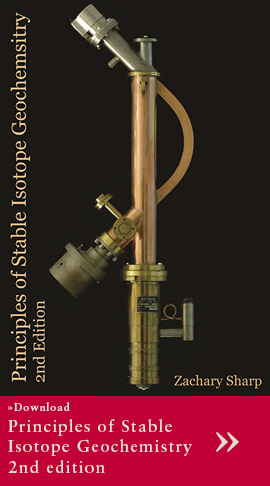The presence of water in martian meteorites provides a unique glimpse into the evolution of water on Mars. Previous studies have shown that the oxygen extracted from water in martian meteorites is generally not in isotopic equilibrium with the bulk silicate rock. By analyzing the isotopic composition of oxygen in the water extracted from a variety of martian meteorites we hope to identify distinct oxygen isotope reservoirs on Mars (mantle, crust and hydrosphere), and attempt to link them to certain geological processes experienced by the different types of martian meteorites. The pioneering work by Karlsson et al. (1992) has thus far been the only systematic study of oxygen isotopic compositions of water extracted from martian meteorites and their data cannot be easily interpreted. A broader and more detailed sampling is the goal of this study. So far we have measured the oxygen isotope composition of water extracted from martian shergottites Tissint and Zagami and are presently working on analyzing other shergottites as well as a variety of nakhlites, chassignites and the basaltic breccia NWA 7034. Water was extracted from samples using stepwise heating and converted to O2 by fluorination. The O2 gas was then purified in a GC column and measured for the triple oxygen isotope value. Δ17O' values of water extracted from Tissint and Zagami are distinctly elevated relative to that of Earth but are lower than the corresponding bulk rock Δ17O' values (0.33‰). This supports the previous observations [2,3] of isotopic disequilibrium (or terrestrial contamination) between the two sites of oxygen (water and bulk rock). Both samples also show a similar trend in the Δ17O' values of the waters released at different temperature steps. The lowest Δ17O' values (<0.1‰) are measured in waters extracted below 150°C. This is likely due to terrestrial contamination of the absorbed water portion. The highest Δ17O' values were measured for water extracted between 200 and 400°C (0.21‰ for Tissint and 0.1‰ for Zagami). At temperatures above 400°C the Δ17O' values of the extracted water begin to get more negative (0.17‰ for Tissint and 0.09 for Zagami). Since both Tissint and Zagami were observed falls, we would not expect extensive terrestrial contamination, although trace amounts of hydration could affect the 'water' data, but not the bulk rock data. The existence of heterogeneity in the Δ17O' values of water extracted at different temperature intervals from Tissint and Zagami supports the possible existence of isotopically distinct reservoirs on Mars. To better understand the origin of the waters in these meteorites, we are currently working on understanding the mineralogical constraints on storage and release of water. The Δ17O' trend observed in water extracted from Tissint and Zagami will be further evaluated as we continue to expand the body of data on the oxygen isotopic composition of water in martian meteorites.
Water in Martian meteorites: oxygen isotope compositions
Conference:
Lunar and Planetary Science Conference
Date:
March, 2016


